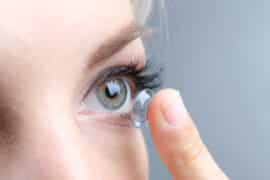Each year, the National Keratoconus Foundation (NKCF) recognizes two clinicians—one ophthalmologist and one optometrist—who have made exceptional contributions to the keratoconus (KC) community. We’re proud to share that the 2025 Ophthalmology recipient of the NKCF Keratoconus Doctor of the Year Award is our very own Dr. Steven Greenstein. Dr. Greenstein is a leading cornea and […]
Read More
Posted by John Gelles on August 25, 2025
If you’re exploring vision correction options, you’ve likely come across EVO ICL surgery—a revolutionary procedure offering clear vision without removing any corneal tissue. But with such a life-changing decision on the horizon, how do you find the right expert to trust with your eyes? What Is ICL and How Does EVO ICL Work? ICL stands […]
Read More
Posted by Steven Greenstein on August 19, 2025
Cataract surgery has come a long way from being just a vision-saving procedure. Today, it’s also a powerful opportunity to improve the quality of your vision and reduce or even eliminate your dependence on glasses or contact lenses. One of the most important choices you’ll make during the cataract surgery process is selecting the right […]
Read More
Posted by Steven Greenstein on August 18, 2025
If you’ve been told your corneas are too thin for LASIK, don’t worry—safe and effective alternatives exist. This article explores why corneal thickness matters and what options are available for vision correction without compromising eye health. Key points covered include: Understanding LASIK and Corneal Thickness LASIK eye surgery has helped millions achieve clearer vision without […]
Read More
Posted by Steven Greenstein on August 10, 2025
Overview Can people with keratoconus drive safely? Keratoconus and driving need not be mutually exclusive paths. With vigilant eye care, the right corrective technology, and practical road strategies, you can maintain the freedom of the open road while protecting yourself and fellow travelers. Why This Topic Matters For most of us, driving equals independence. Yet […]
Read More
Posted by Steven Greenstein on August 8, 2025
Facial nerve palsy, including Bell’s palsy, results from dysfunction of the facial nerve (Cranial Nerve VII), leading to paralysis or weakness of the facial muscles. This paralysis often affects the orbicularis oculi, impairing the ability to close the eyelids fully and resulting in lagophthalmos. Inadequate eyelid closure causes exposure keratitis, a condition marked by corneal […]
Read More
Posted by John Gelles on August 7, 2025
Exposure keratitis is a condition that results from inadequate eyelid coverage of the ocular surface, leading to corneal drying and subsequent damage. This can significantly impact a patient’s comfort, vision, and quality of life. Scleral lenses are a valuable treatment option for protecting the ocular surface and improving overall outcomes in patients with exposure keratitis. […]
Read More
Posted by John Gelles on August 6, 2025
This article highlights advancements in wavefront-guided scleral lenses, summarizing the pioneering work of Dr. John Gelles and his team at the Cornea and Laser Eye Institute (CLEI). Their expertise and contributions have helped define the transformative potential of this technology for patients with complex corneal conditions. This summary draws from peer-reviewed publications and abstracts presented […]
Read More
Posted by John Gelles on August 4, 2025
Keratoconus is a progressive eye disease that affects the cornea, causing it to thin and bulge outward into a cone-like shape. This distortion leads to blurred vision, light sensitivity, and, in severe cases, significant vision loss. While the exact causes of keratoconus are complex and multifactorial, ultraviolet (UV) radiation has emerged as a contributing factor […]
Read More
Posted by Steven Greenstein on July 29, 2025
Keratoconus is a progressive eye condition that can impact not only the patient but also their family members. For families, understanding keratoconus, risk factors, treatment options, and importance of early screening is essential for providing support and preventing complications. Understanding Vision with Keratoconus Keratoconus can have a massive impact on quality of life. Halo, glare, […]
Read More
Posted by John Gelles on July 18, 2025













